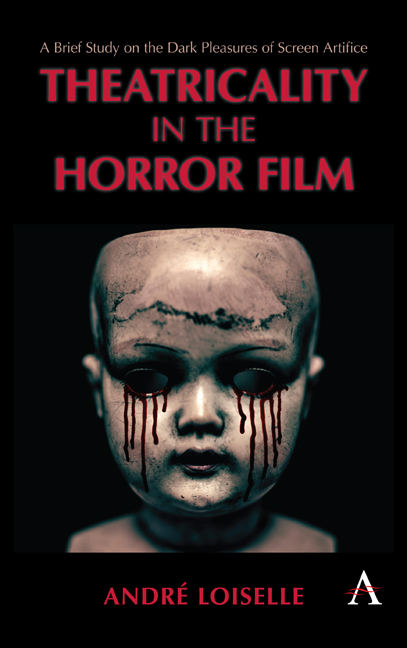Book contents
- Frontmatter
- Contents
- List of Illustrations
- 1 Introduction: Of Monsters and Monstration
- 2 Horror, Realism and Theatricality
- 3 The Theatricality of Monstrous Villainy in Film Adaptations of Horror Plays
- 4 The Theater as Locus Horribilis: Staging the Paradox of Tragic Horror
- 5 The Theatricality of Horror: Characters, Unities and Styles
- 6 Conclusion: The Theatricality of Horror Spectatorship
- Bibliography
- Index
1 - Introduction: Of Monsters and Monstration
Published online by Cambridge University Press: 16 November 2019
- Frontmatter
- Contents
- List of Illustrations
- 1 Introduction: Of Monsters and Monstration
- 2 Horror, Realism and Theatricality
- 3 The Theatricality of Monstrous Villainy in Film Adaptations of Horror Plays
- 4 The Theater as Locus Horribilis: Staging the Paradox of Tragic Horror
- 5 The Theatricality of Horror: Characters, Unities and Styles
- 6 Conclusion: The Theatricality of Horror Spectatorship
- Bibliography
- Index
Summary
Let us begin this brief study on theatricality in the horror film with a question on etymology and syntagmatics, however pedantic it might seem. If, as Robin Wood has famously suggested, the horror film can be summarized as “normality is threatened by the monster” (Wood 1979, 14), then how does the syntagma “monster” signify its threatening difference from the syntagma “normality”? While there are many definitions of what a monster is, including Jacques Derrida's statement that “a monster is a species for which we do not yet have a name” (Derrida & Weber 1995, 386), etymologically the term is specifically related to the notion of being put on display. Derived from the Latin monstrare, the word “monster” connotes the state of being shown. The term is also associated to monere, “to warn”: the monster is a warning sign of impending disaster (Huet 2000, 87). The term “monster” therefore is recognizable as a signifier of threatening ostentation that brazenly challenges “normality,” which, by definition, is unremarkable, banal and commonplace. As Ernest Mathijs puts it, “ostentation certainly characterizes every monster role” (Mathijs 2012, 139). The monster stands out in all its spectacular abnormality before the appalled gaze of the “normal” observer who sees it as an omen of terrible things to come. The monster is often a weird creature from some strange land. But it does not have to be. It might be an ordinary person, an everyday object or merely a vague impression. Whatever it is, however, the monster ostentatiously appears at some critical point in the film as an aberrant display that threatens mundane reality. Norman Bates (Anthony Perkins) might look perfectly normal through most of Psycho (1960, Alfred Hitchcock). But at the climatic moment of horror, he emerges as the grotesquely bewigged embodiment of abnormality, shocking everyone on screen and in the cinema (Figure 1.1).
The term “monster” is also a close relative of the narratological term “monstration,” used primarily by historians of early cinema, such as André Gaudreault, to explain cinema's relationship to the theater, and its departure from it. In his book Du littéraire au filmique: Système du récit (1988), Gaudreault argues that film creates its meaning through a combination of two broad techniques: monstration, or showing in a continuous shot, and narration, or the juxtaposition of shots through editing. Monstration is the aspect of cinema that links it most directly to theater.
- Type
- Chapter
- Information
- Theatricality in the Horror FilmA Brief Study on the Dark Pleasures of Screen Artifice, pp. 1 - 8Publisher: Anthem PressPrint publication year: 2019



